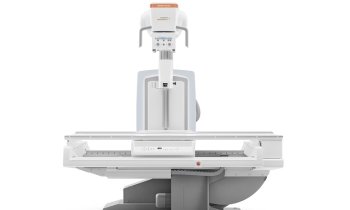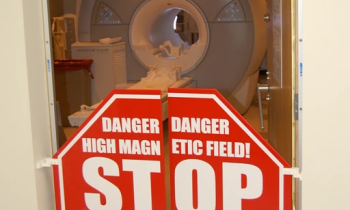Vexing questions for anaesthetists
How can postoperative delirium and postoperative cognitive dysfunction be avoided? How is it best to address the problem of epilepsy? How can anaesthetists cope better with a patient death under anaesthesia? These difficult questions were among many addressed by specialists at HAI 2009, the annual conference of the German Society for Anaesthesiology and Intensive Care Medicine (DGAI).
Report: Bettina Döbereiner

Postoperatively, delirium and cognitive dysfunction are serious problems. How can these events be avoided? The question is clearly significant, but why? For answers, we asked HAI 2009 conference president Professor Claudia Spies MD, a member of the executive committee of the Association of Scientific Medical Societies in Germany (AWMF) and managing director of Charité Centre of Anaesthesiology and Intensive Care Medicine, where she is in charge of several research groups examining postoperative delirium and postoperative cognitive dysfunction.
‘In anaesthesiology and intensive care medicine both medical conditions are widely underestimated,’ Professor Spies explained. ‘Studies have proved that postoperative delirium is associated with a high morbidity rate, and mortality within six months is three times higher. In addition, the complication rate is considerably higher and aftercare more complex. We still know very little about postoperative cognitive dysfunction. We recognised only recently, in 2006/2007, that it has a relatively high incidence. The extent of the problem becomes obvious when considering that patients cannot concentrate any more, are unable to work, or cannot live anymore in their former circumstances, for example, after intervention 30% of over 80-year-olds cannot. Therefore we think better strategies to indicate, treat and particularly prevent postoperative delirium and cognitive dysfunction, are absolutely essential.
‘In anaesthetic recovery rooms 15-50% of patients are affected by postoperative delirium, but only about 2-3% of German hospitals screen for delirium in the recovery room. In the intensive care unit (ICU) the situation is more dramatic: about 30-80% of patients needing artificial respiration suffer delirium, but in two thirds of cases it goes unrecognised.
‘Preliminary findings indicate that 30% of patients aged 18-59 years old have a cognitive disorder at hospital discharge and at least 5% of discharged patients have it after three months. Older patients are more affected: 40% after hospital discharge and 12% after three months.’
Professor Spies pointed out that there are potential causes of postoperative delirium. ‘In many cases a delirium indicates an incipient infection. However, other reasons, or an accumulation of different reasons, can cause it, such as a lack of special drugs, or alcohol in addicted patients, too much or little intra- and postoperative fluid volume, a lack of intra- or postoperative pain therapy, and so forth. To know more about the causes for postoperative cognitive dysfunction we still need more research. Certainly postoperative delirium can entail a long-term cognitive dysfunction.’
How are these problems best treated? ‘The most important is to detect a delirium as soon as possible. Then a different diagnosis and an adequate treatment should take place. An incipient infection, for example, should be treated with antibiotics. In addition, drugs should be given that counteract the symptoms of delirium to decrease the stress. In the case of postoperative cognitive dysfunction it is generally too late to medicate.
How can such cases be prevented? Professor Spies believes that, due to the high incidence and low detection rate of postoperative delirium, world- and nationwide routine screenings are needed and that these should be ‘… in line with actual guidelines, for example the Nurses Delirium Screening Scale (Nu-DESC), which is a measuring instrument for the clinical diagnostics of delirium. It is quickly operable, care-based and thus can be easily integrated into everyday routine. Besides we should concentrate in prevention. We found out, that the duration of sobriety prior to surgery and the choice of intra-operative opioid reduce the incidents of postoperative delirium. In terms of postoperative cognitive dysfunction, we need more research.’
Epilepsy
Until now the problem of an epileptic fit occurring during anaesthesia has also received little attention. Anaesthetist Dr Ingrid Rundshagen, Associate Professor at the Charité University of Medicine Berlin, pointed out that there is still a lack of research on the proconvulsive effect of anaesthetics. Worldwide the incidence of epileptic fits ranges between 0.3 to 0.5% and 5-10% of people suffer a convulsion in their lifetime. To reduce the risk of convulsions during surgery Professor Rundshagen said it is absolutely necessary to know exactly which anaesthetic could provoke them, requiring an evidence-based, randomised survey with EEG monitoring.
Deaths during anaesthesia
What happens if a patient dies during anaesthesia? Addressing a packed auditorium, Professor Hinnerk Wulf (Philipps University Hospital, Marburg) revealed that, unlike emergency, intensive care and palliative care specialists, in the case of a death during treatment anaesthetists still have no adequate support. In addition this issue is widely disregarded in academic studies and post graduate courses. The professor quoted one study which revealed that 92% of anaesthetists experienced the death of a patient during anaesthesia and 11% reported that this had a long-term impact of their work. In fact, the follow-up care for anaesthetists depends only upon the personal initiatives of colleagues or a superior.
Prof. Wulf interestingly proposed learning from German railways. In a lecture given by psychologist Viola Margraf, of the German Railways (DB) health service division, she explained that every train driver is statistically confronted twice in his/her career with a suicide – and two to three humans commit suicide every day on DB rails.
Thus, 15 years ago, the DB health service developed a treatment concept for distressed train drivers. This addresses three areas: prevention, intervention and after-care. Prevention provides every train driver with special stress and conflict management for two days. Intervention provides concrete instruction as to how to act if faced with a suicide; the train driver immediately comes under the care of a supervisor. Aftercare offers a voluntary counselling interview with a psychologist.
Quoting an internal study, she said that working days lost due to a reaction to a suicide could be reduced from 22.9% to 13.8% due to this model.
The intense interest among participating anaesthetists and the numerous contributions demonstrated a clear need to address the important issue of patient deaths during anaesthesia.
Keen to communicate
The Interfaces session was another that drew considerable audience attention, for the meeting aimed to find ways to improve internal and interdisciplinary communication to enhance clinical routine.
18.11.2009









